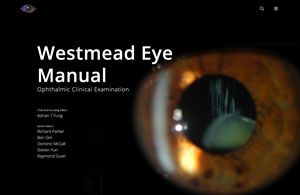2.4 Digitally Assisted Vitrectomy
In recent years, advances in camera and image processing technology have enabled vitreoretinal surgery to be performed with the assistance of stereoscopic videography. A high dynamic range (HDR) digital camera is either mounted onto or integrated within the standard operating microscope, replacing the analogue viewing optics that the surgeon traditionally looks through. This digital image is then projected onto a high-definition monitor capable of supporting three-dimensional (3D)-imaging. Wearing polarized 3D glasses, the surgeon performs the surgery by viewing across at a screen in an upright “heads-up” position. Commercially available platforms currently include the NGENUITY® 3D Visualization System (Alcon, Fort Worth TX) and the ARTEVO 800 (Carl Zeiss Meditec).
Several advantages over the conventional analogue system have been suggested.[1] Improved ergonomics for the surgeon may be obtained in a heads-up position; this may reduce the risk of flexion related cervical spine pathology in the long-term.[2] Another key potential benefit is the ability to have multiple data overlays (such as intraoperative optical coherence tomography scans or toric axis markers or the vitrectomy machine parameters) simultaneously available on the same screen for easy viewing (Figure 2.4.1).[3] In addition, when 3D glasses are worn, all observers in the room can experience the same viewing clarity as the primary surgeon which may improve surgical teaching and nursing support. Finally, digital filters can potentially enhance the view of posterior segment tissue (e.g. vitreous and epiretinal membrane).
Franklin AJ, Sarangapani R, Yin L, Tripathi B, Riemann C. Digital vs analog surgical visualization for vitreoretinal surgery. Retinal Physician. 2017 May 1.
Zhang Z, Wang L, Wei Y, Fang D, Fan S, Zhang S. The Preliminary Experiences with Three-Dimensional Heads-Up Display Viewing System for Vitreoretinal Surgery under Various Status. Curr Eye Res. 2019 Jan;44(1):102–9
Ehlers JP, Uchida A, Srivastava SK. THE INTEGRATIVE SURGICAL THEATER: Combining Intraoperative Optical Coherence Tomography and 3D Digital Visualization for Vitreoretinal Surgery in the DISCOVER Study. Vol. 38 Suppl 1. United States; 2018
There are some limitations to the technology as it currently stands. Potential disadvantages include perceived latency of the digital viewing system compared to real-time, most noticeable during suturing. This has improved significantly with recent updates in the technology (now 70ms on the NGENUITY ® platform). There is a learning curve adjusting to the altered depth of field, color and contrast as compared to the analogue system.[4,5] Peripheral examination and peripheral vitreous gel trim can also be challenging, especially without an assistant for scleral indentation.
Previous
2.3 Vitrectomy Settings
All rights reserved. No part of this publication which includes all images and diagrams may be reproduced, distributed, or transmitted in any form or by any means, including photocopying, recording, or other electronic or mechanical methods, without the prior written permission of the authors, except in the case of brief quotations embodied in critical reviews and certain other noncommercial uses permitted by copyright law.
Westmead Eye Manual
This invaluable open-source textbook for eye care professionals summarises the steps ophthalmologists need to perform when examining a patient.

